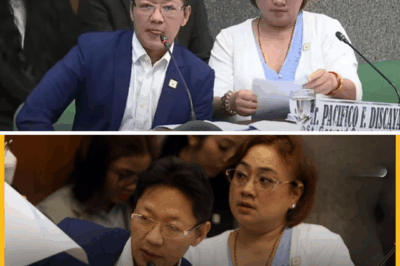Introduction
When we say a film “transcends romantic love,” what do we really mean? In NoraCoy, the collaboration of Nora Aunor and director Elwood Perez seeks to answer that. What begins as an homage to a classic — Lollipops & Roses at Burong Talangka (1975) — becomes a daring attempt to break the shackles of formulaic romance and probe something deeper: the undefinable, transcendent aspect of love, identity, memory, and longing.
In this article, we trace the genesis of Lollipops & Roses at Burong Talangka, revisit its cultural legacy, explore how the “NoraCoy” reimagining reinvents it, unpack the thematic stakes, examine Nora Aunor’s artistry, and reflect on how this project fits within Philippine cinema’s evolving landscape. The goal is not just to inform, but to stir curiosity: what lies beyond the familiar tropes of love?
Part I: Revisiting Lollipops & Roses at Burong Talangka — Context and Legacy
Historical and Cultural Backdrop
Released in 1975, Lollipops & Roses at Burong Talangka was directed by Elwood Perez, with screenplay by Toto Belano.
The cast featured Nora Aunor and Victor “Cocoy” Laurel, among others.
At that time, Philippine cinema was navigating tensions between popular formulaic romance, social realism, censorship pressures, and audience expectations. The 1970s was an era of stylistic experimentation in local film, though still often bound by conventions of melodrama and romantic plots. Nora Aunor, already a major star, oscillated between commercial appeal and more daring roles. Lollipops & Roses at Burong Talangka had the dual identity of mass appeal and potential subtextual nuance.
Its very title is evocative: “Lollipops & Roses” suggests sweetness, innocence, romantic tropes; “Burong Talangka” (fermented crab) evokes something pungent, sour, local, preserved — a contrast, a twist. That juxtaposition hints that the film was not purely a saccharine romance. Over the decades, the film has been remembered not just as a romance but as part of Nora’s legacy and Philippine pop cinema history.
The Original’s Narrative & Themes (Brief Sketch)
While full plot summaries are scarce in public archives, the original film appears to mix romantic comedic elements with musical interludes, perhaps even screwball impulses — a genre blending typical of mid-20th-century Philippine films.
The casting of Nora Aunor and Cocoy Laurel had been a popular “loveteam” pairing for films in the 1970s, lending the film immediate emotional resonance.
However, beneath the lightness likely lay tensions of desire, disillusionment, the local identity, or memory — the kind of emotional layers that make a “simple romance” linger beyond its closing credits. Over time, the original film became part of Nora’s signature moments in her prolific career.
spot.ph
Thus, Lollipops & Roses at Burong Talangka serves as both a cultural artifact and a springboard: a film whose surface charm hides richer emotional soil.
Part II: The “NoraCoy” Reimagining — What It Aims To Do
Why “NoraCoy”? The Name as Signal
The title “NoraCoy” immediately signals that this is not just a remake or rehash. It’s a portmanteau — merging “Nora” (Aunor) and “Coy” (from Cocoy Laurel) — evoking the partnership while simultaneously highlighting the personal, the hybrid, the in-between. It suggests a space that is not fully Nora, not fully Cocoy, but something charged between them — a liminal territory. It promises intimacy, memory, echo, negotiation.
Thus, the name primes the viewer for a film concerned less with narrative closure and more with resonances, echoes, reflections.
Transcending Romantic Love — What That Means
To say NoraCoy “transcends romantic love” is to claim that it aims to go beyond the typical plot of courtship, conflict, separation, reconciliation. It suggests that the film seeks to explore:
Love as memory and loss
Love as identity and reflection
Love as longing across time
The residual, often haunted, emotional space after romance
Perhaps even love beyond the human — love of art, love of self, love of absence
This is not a romantic epic; it is more likely a meditation, using cinematic form to evoke rather than narrate, to linger rather than resolve.
Directorial Vision: Elwood Perez Revisited
Elwood Perez’s original direction in 1975 already set a base. The “NoraCoy” version carries his lineage, but with room for reinterpretation. We can imagine that Perez (or collaborators in the revival) would:
Retain motifs from the original (music, visual symbolism, local color) as anchors
Subvert or reframe certain romantic tropes (the meet-cute, the misunderstanding, the reconciliation)
Introduce temporal layering (past vs present, memory vs re-experiencing)
Use visual or musical motifs to tie characters to emotional states
Emphasize mood over plot
This approach demands that the audience engage not just with “what happens” but “how it makes us feel,” how images echo, how silences speak.
Challenges and Risks
Such a reinterpretation is not without risks:
Fans of the original may expect romance, clear narrative, nostalgia — and may resist ambiguity
Balancing homage vs innovation is delicate — too reverential becomes museum, too radical becomes alienating
The film must carry emotional weight; if too abstract, the audience may feel detached
Ensuring Nora Aunor’s presence is felt not just as celebrity but as embodiment
But if successful, NoraCoy could reframe the original in a more mature, layered, evocative light.
Part III: Nora Aunor — The Heart of NoraCoy
A Legend Revisited
Nora Aunor’s career spans decades; she is a figure of myth in Philippine entertainment. Her performances often combine raw emotional vulnerability, restrained power, and authenticity. In roles where she evokes longing, regret, hope — her gaze carries histories.
Lollipops & Roses at Burong Talangka was among the films that helped define her trajectory in the 1970s.
In retrospective lists of her career-defining moments, that film is cited.
In NoraCoy, her role is not simply reprising an old character but re-contextualizing it. She becomes a vessel of memory — her presence both familiar and haunted. The challenge for her is to balance what the audience remembers (romantic icon) with what the film demands (a more interior, ethereal, perhaps dislocated version).
Performance Possibilities
Given the film’s implied ambitions, Nora’s performance might include:
Scenes of silence, gaze-driven emotion
Fragmented dialogues referencing past events
Re-enactments of original sequences, now reinterpreted
Layers of self-reflection — perhaps playing multiple versions of herself
A tension between presence and absence
Her voice, facial micro-expressions, pauses — these become part of the film’s emotional language. She isn’t just the romantic lead; she is the memory, the echo, the presence that lingers when love recedes.
Part IV: Thematic Threads & Symbolism
Below are some thematic axes and symbolic potentials that NoraCoy may explore, richly anchoring its ambition to transcend romance.
Memory and Temporal Echo
Much of what makes love linger is memory: the smell, the echo of laughter, the regret of words unsaid. NoraCoy likely uses temporal shifts — flashbacks, parallel timelines — to show how the past haunts the present. The original Lollipops & Roses becomes a ghost that the new film converses with.
Absence, Longing, and Silence
Where romance is full of action, this film may privilege absence. Unsaid lines, missed chances, silences loaded with meaning. Longing as a sustained presence. Scenes that feel unfinished.
Identity as Palimpsest
“NoraCoy” itself is a layered name. Identities in love are not fixed — we see versions of ourselves, versions projected by others, versions lost. The film may question: who remains when love changes? How much of us is shaped by the ones we loved, even after they are gone?
The Local & the Poetic
The original’s local flavor — “Burong Talangka” — grounds the story in Filipino-ness: tastes, smells, traditions, local vernacular. The reimagining might use that flavor not as nostalgia but as counterpoint: everyday elements as poetic anchors — a scent, a mango tree, a particular street — becomes emotional geography.
Love Beyond Genre
By transcending romantic love, NoraCoy possibly gestures toward love in multiple dimensions: self-love, love as art, spiritual or metaphysical love. Or even love as a longing for something unnameable.
Part V: Narrative Possibility — A Hypothetical Structure
Below is a speculative outline of how NoraCoy might be structured to realize its thematic ambitions.
Act I: Reentry & Reunion
The film opens with Nora (older) returning to a house, or a familiar place, opening doors, touching objects.
Fragments of music or lines from the original Lollipops & Roses play softly — echoes of what once was.
She meets a character who references the old era — perhaps Cocoy (or a surrogate). They exchange glances, memories.
Act II: Overlapping Pasts
Scenes alternate between “then” and “now”: the youthful romance as it was, and the present-day emotional residue.
Moments in the past are reframed: what seemed romantic now hints at miscommunication, suppressed longing, the weight of time.
Internal monologues, voiceovers, or poetic interludes — glimpses into inner emotional life.
Symbols emerge: objects, flowers, lollipops, “burong talangka” as metaphorical anchors.
Act III: Collision & Transcendence
A climactic confrontation or reconnection — but not necessarily a reunion in conventional sense.
One or both characters realize that what they loved is no longer the same; the film acknowledges change, loss, and acceptance.
The film ends not with certainty but with resonance — a lingering shot, a musical motif, a visual echo that suggests love continues, transformed.
This structure is more emotional than plot-driven. The audience is invited into reflection rather than resolution.
Part VI: Cinematic Language & Stylistic Choices
To deliver on its ambition, NoraCoy must lean on cinematic language: visuals, sound, editing, performance. Here are some stylistic levers it might (or should) pull:
Visual Motifs & Symbolism
Repeated visual motifs: flowers turning wilted, crab shells, lollipops, mirrors, water reflections
Use of color shifts: warm hues for memory, cool tones for present, or monochromatic interludes
Framing that emphasizes space, emptiness, distance — long shots, negative space
Mirror shots or reflections to evoke duality (self vs memory)
Editing & Temporal Shifts
Nonlinear editing to blur past and present
Cross-cutting between past and present echoes
Use of ellipses (omission) — what’s between scenes speaks
Sound bridges: the same melody or ambient sound bridging time
Sound & Music
Revisiting original musical motifs from Lollipops & Roses (if rights permit), transformed
Ambient sounds (street, wind, distant traffic) as emotional texture
Moments of silence or near silence — letting soundscape carry emotion
Diegetic music (characters singing, radio) as memory cues
Performance & Gaze
Nora’s gaze as anchor — the camera lingers on her face, her silence
Secondary characters as emotional foils, but the focus remains interior
Minimal dialogue in key moments; facial micro-shifts become expressive
Part VII: NoraCoy in the Landscape of Philippine Cinema
Nostalgia vs Relevance
In the Philippines, revisiting classic films carries both opportunity and burden: audience nostalgia pulls one way, the imperative to speak to the present pulls the other. NoraCoy must balance paying homage and forging relevance. It asks: can we see love differently now, given shifting social, relational, gender norms?
Star Icon & National Memory
Nora Aunor is more than a film star — she is woven into national memory. NoraCoy thus becomes not just film but cultural site. The reinterpretation may spark debate: how do we revisit icons without fossilizing them?
Innovation in Form
Local cinema often leans melodrama or commercial romance. NoraCoy gestures toward cinema as art-meditation — a move that’s risky but potentially transformative for audiences seeking depth. It contributes to a strand of Philippine cinema exploring memory, identity, introspection (akin to works by Lav Diaz, Raya Martin, etc.).
Invitation to New Audiences
For younger viewers unfamiliar with the 1975 film, NoraCoy can act as entry — it may encourage them to unearth the original, to see how meaning shifts over decades. It also invites cross-generational conversation: what did love mean then? What does it mean now?
Part VIII: Anticipated Reception, Potential Critiques, and Impact
What Audiences May Love
The emotional resonance: if the film delivers, viewers will feel haunted, not just entertained
The layered performance of Nora Aunor — seeing her reinterpret her legacy
The visual and sonic poetry — moments that linger long after the credits
The dialogic relationship with the original — fans will relish spotting echoes
Possible Criticisms & Pitfalls
Some viewers may find it too abstract, lacking clear plot
Purists might criticize deviations from the original
If thematic ambition outpaces narrative grip, some may feel disengaged
The balance between homage and reinvention is precarious
Cultural and Artistic Legacy
If NoraCoy succeeds, it may become a reference point for how to revisit classics without demeaning them. It could encourage cinematic revival projects that do not simply re-make but re-imagine. It may also deepen appreciation of Nora Aunor’s artistry and the emotional possibilities of Philippine cinema.
Conclusion: Beyond the Romance, Into the Echo
NoraCoy is not a film about lovers winning or losing. It is a film about what lingers after the lovers, about the echo they leave in memory, about how love is never just about two hearts meeting — it is about how we map ourselves through time, through absence, through presence. Lollipops & Roses at Burong Talangka is not just the inspiration — it is the ghost with whom NoraCoy dialogues.
By daring to transcend romantic love — by embracing silence, reflection, ambivalence, memory — this reinterpretation stakes a claim: that cinema can be a space of emotional excavation, not just spectacle; that love’s true resonance is not in closure, but in how it reverberates.
So when the lights dim and NoraCoy unfolds, listen for what lies in the spaces between words, watch for what lingers after images fade, and let your heart attend to what cannot be named. That is the promise — and the gamble — of NoraCoy.
News
The Ultimate Betrayal: ₱15 Million Worth of Disaster Relief Goods Seized in Manila Raid
When Aid Becomes Black Market Profit: The Tondo Scandal In a revelation that has ignited national outrage, the Philippine National…
The P180 Billion Swindle: How a Single Family’s Alleged Corruption Drained Flood Control Funds
The Day the AMLC Hammer Dropped: 164 Accounts Frozen In a dramatic move that sent shockwaves through the Philippines’ political…
CRISIS OF LIFE: Inside the ICI Hearings Set to Expose Systemic Failures That Have Left Millions of Filipinos Drowning in Floods
INTRODUCTION: THE NEVER-ENDING BATTLE WITH THE WATER The annual rainy season in the Philippines is not just a climatic phenomenon;…
The Decisive Blow: The Shocking Revelation of the ‘Pioneer’ Whose Sacrifice Is Key to a Philippine Snap Election
The Analyst’s Prophecy: Who Must Make the Ultimate Political Sacrifice? The political theatre in the Philippines is rarely short on…
End of content
No more pages to load







